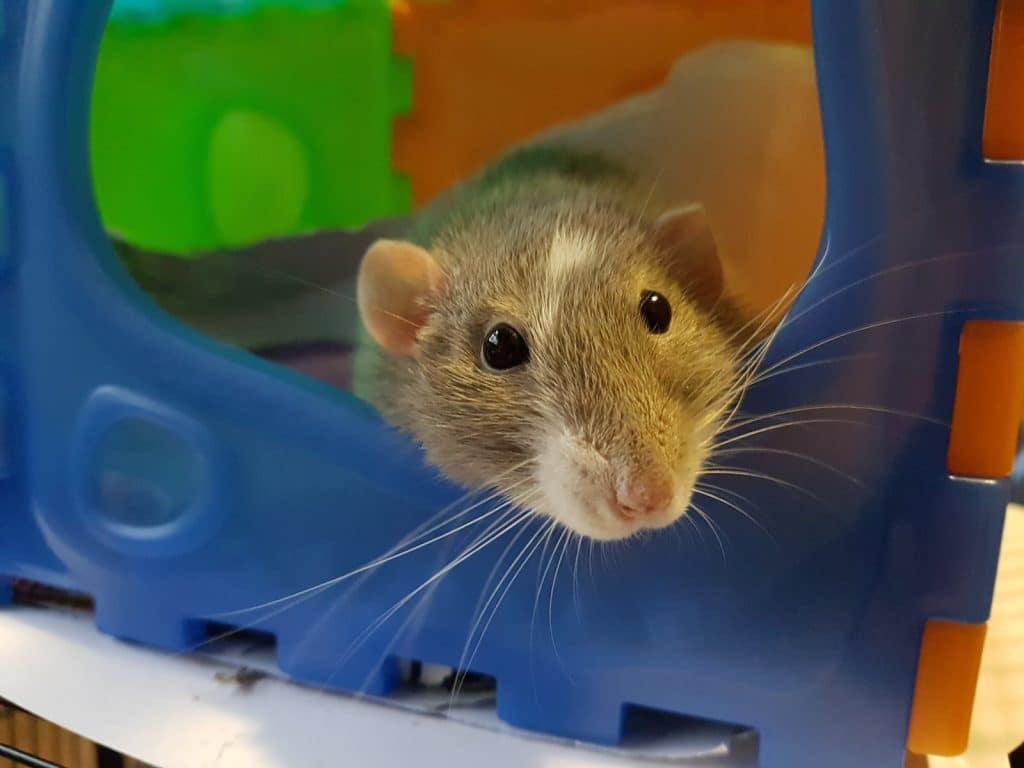
Fancy rats are sociable, playful, intelligent, and affectionate. They make wonderful pets, so if you’ve been considering adding a pet rat (or two!) to your family, then you’re in the right place. Fancy rats are gentle and make great small pets for kids, as they’re easier to handle and more playful than the more popular hamster!
Fancy rats require a large cage. They also need to be able to move around outside their cage. Let’s not let wild rats be regarded as filthy street animals and instead discover all there is to love in the domestic fancy rat.
Here are some facts about fancy rats
| Species Name: | Rattus norvegicus domestica |
| Family: | Muridae |
| Care Level | Medium |
| Temperature: | Comfortable at standard house temperatures |
| Temperament: | Sociable, fun, and smart |
| Color Form: | There are many colors and markings available, including Russian and marked self-varieties. |
| Lifespan: | 18 to 36 months |
| Size: | Body 9-11 inches, tail 7-9 inches |
| Diet: | Fresh fruit and vegetables, occasional protein-rich treats, rat pellets or nuggets |
| Minimum Tank Size: | 2 feet x 2 feet x 2 feet Wire cages preferable over glass tanks |
| Tank setup: | Bedding, toys, water, hideaways, and bedding |
| Compatibility: | Keep your best friends in the same-sex pair |
Fancy Rat Overview
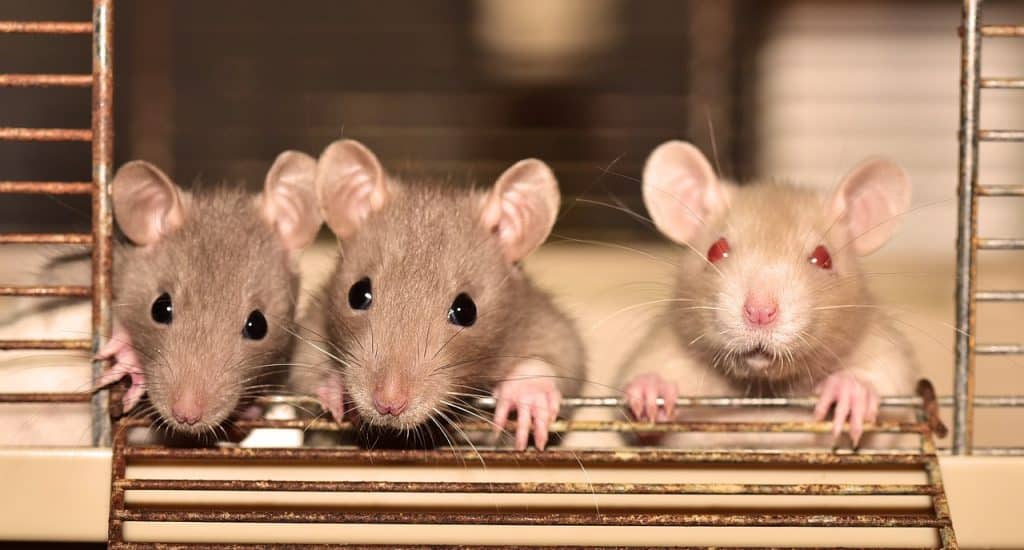
Fancy rats are the domestic version of the Norway Rat. They are psychologically and physiologically very different from their wild counterparts. They are social and playful and you should keep them company.
Fancy rats are fun to meet and have unique personalities. Fancy rats are more active during the day than other small pets like hamsters. This means that you have more time with them during daylight hours, and they will be less likely to keep you awake at night.
What is the Average Cost of Fancy Rats?
They are very affordable, and you can often find them between $20-40 per rat. A reputable pet shop or breeder will have the best chance of finding a rat for you. They will also be more comfortable being handled.
Babies that are regularly handled when they are young will be more friendly and outgoing.
The Typical Behavior and Temperament
Fancy rats are social and outgoing. Fancy rats enjoy socializing with people and can be taught tricks like how to walk on a harness or use a litter box in their cage.
Toys are their favorite toy, so keep them entertained by providing toys such as balls and chew toys.
Rats love to be handled and will happily lay on your shoulder or lap. Rats are less likely to bite than small pets, especially when they are handled frequently.
Even if you have a large cage for your rat, it is advisable to let them out of its cage every day. They will be happy to enjoy more than that if they are allowed.
Rats can be social, so keep them together in a same-sex pair. It is possible to have littermates together. Both male and female rats can be kept together. However, it is best to spay or neuter them to prevent them from having babies. Male combinations can be aggressive but can often be controlled by having them neutered.
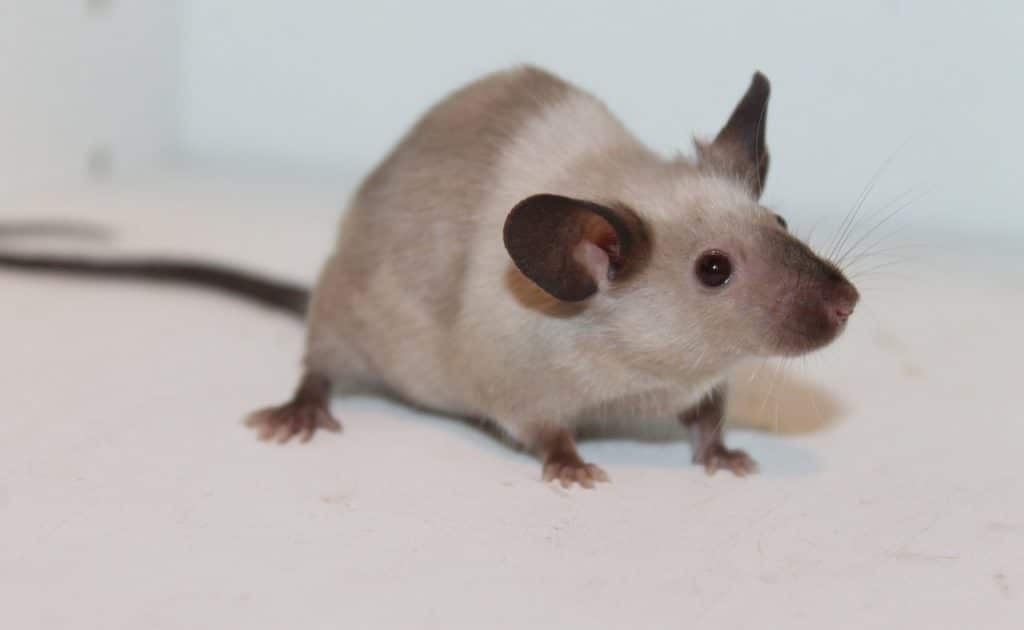
Appearance and Varieties
There are many colors available for fancy rats, so there will be plenty of options when you choose your pet. These are the most popular varieties as outlined by the National Fancy Rat Society.
Self
These fancy rats may be pink-eyed, white, buff, platinum or quicksilver, British Blue, black, chocolate and mink.
Marked
The markings of fancy rats marked with a crest can be classified into Berkshire (badger, Irish), hooded (variegated), capped, Essex (blazed Essex), Chinchilla (squirrel), roan, and striped (banded) husky.
Russian
You can find these fancy rats in Russian blue, Russian dove, and Russian topaz.
Shaded
Shaded fancy rats are found in the colors Siamese and Siamese as well as Burmese, Siamese, and blue point Siamese.
Other varieties
The “AOV” category includes cream, topaz, and silver fawn as well as silver, silver, agouti(opal), lilac (lynx), pearl (cinnamon pearl), and platinum agouti.
Guide standard
This class includes fancy rats in cream, Russian dove, Russian silver, Russian Silver agouti, and spotted Downunder.
Proviso
This color class includes bareback and blue point Himalayan.
Rex and Dumbo fancy rats are also available. Rex fancy rats have curled hair and few whiskers. They can be any of the colors listed above.
Dumbo fancy rats’ ears are on the sides of the heads rather than at the top. These ears are also more prominent. These can be any of the colors listed above.
American Fancy Rat and Mouse Association also include hairless, bristle, and tailless varieties within their breed standard.
How to Care for a Fancy Rat
Habitat, Cage Conditions, and Setup
Cage
While some owners keep their rats inside glass aquariums, we prefer a high-wire cage with a solid floor. This will allow for better air circulation and give your rats places to climb. Most rats love this!
You should aim for a 2-foot square cage. However, if you have the budget and space in your home to fit the cage, you will give your rat more room.
Temperature
Rats will feel comfortable in a house that is between 65 and 75 degrees Fahrenheit as long as they have lots of shelter and bedding. If possible, avoid putting their cage in direct sunlight.
Accessory
Rats love to burrow in order to feel safe and secure in the wild. You can make your rat feel safe and secure by adding tunnels and hideaways to their cage. Hanging hideaways are also possible if your rat loves climbing!
Bedding
For fancy rats, paper bedding is the best. It is possible to make your own bedding using shredded paper. However, you should only use non-toxic ink or plain paper.
Even if cedar wood shavings are available, do not use them as bedding. Cedar bedding has been shown to cause a 60% mortality rate in pet rats. These aromatic wood shavings may contain toxic substances that can be ingested by rats.
Aspen bedding is one option, but experts recommend avoiding it as it contains aromatic compounds that could cause allergies and respiratory problems.
Your rat may have an allergic reaction if they are sneezing, scratching its nose, or biting its own skin.
It is possible to teach your rat how to use a small litter box with wheat straw litter. Rats are smart creatures and can figure it out quickly. This makes it easier to clean their cage.
Are Fancy Rats able to get along with other pets?
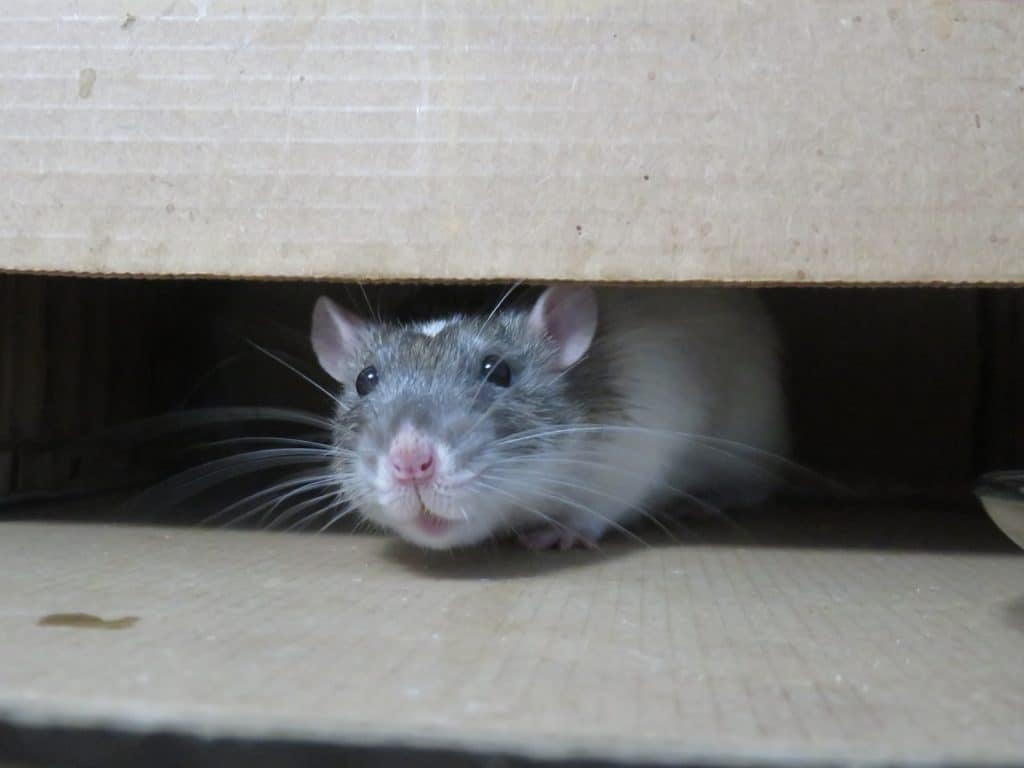
With some care, fancy rats can be good friends with other pets. Fancy rats can be a good companions for cats and dogs but should not be left unsupervised.
Dogs and cats may show an unhealthy interest in rats. This is normal, as both cats and dogs are predators. You may decide to place your rat’s cage somewhere your cat or pet dog cannot access, depending on their prey drive. If your cat or dog is constantly watching them, it can cause stress for your rat.
It will all depend on your rat’s personality and the personalities of the other pets. Some pets can live happily together, provided they are supervised. Some combinations may need to be kept apart.
What to feed your fancy rats
Pelleted food or mixed food made specifically for rats is the best choice. Although it might seem tempting to feed them food for mice or hamsters, this is not recommended. They will pick the best bits, which are usually the ones with the fattest, and then throw away the rest.
Rat teeth are constantly growing so they need to eat abrasive food to trim their teeth.
Supplementing your rat’s diet can be done by adding small amounts of protein such as chickpeas, small dog biscuits, or mealworms.
A small amount of fresh vegetables is sufficient. Although your rat may enjoy fruit, it is high in sugar so this snack should be limited to occasional treats. A teaspoon of fruit each week is enough.
Rats are susceptible to overeating. Make sure to monitor their weight to ensure they don’t become obese.
How to Keep Your Fancy Rat Healthy
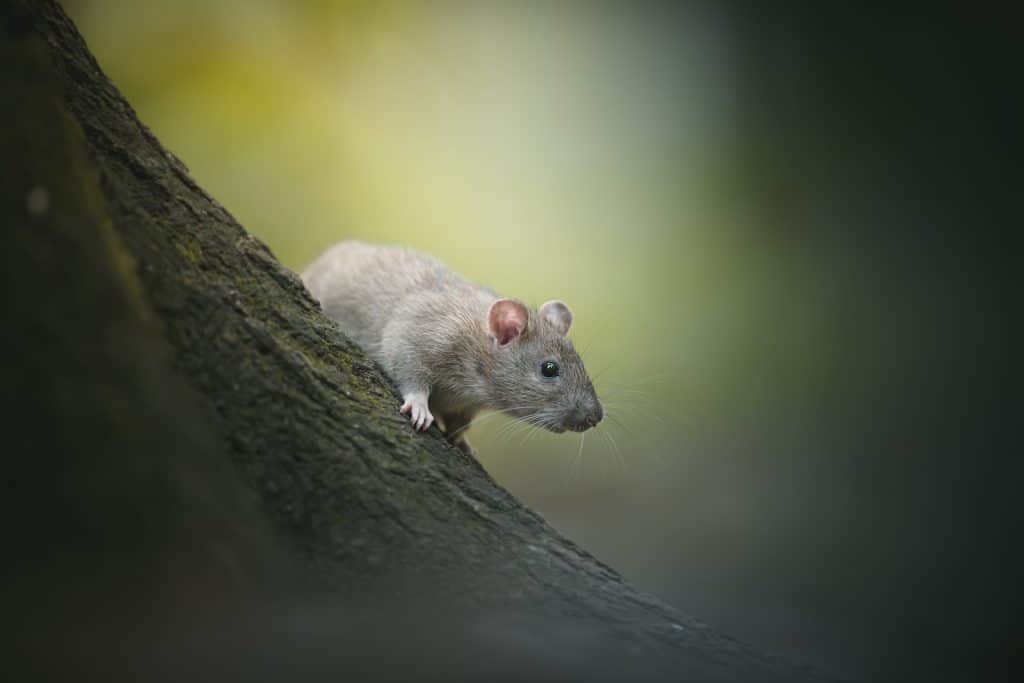
Fancy rats are generally healthy pets. The main health concerns are respiratory disease and mammary cancer.
Dust-free bedding can help to reduce the symptoms of breathing problems in fancy rats. Mycoplasma, a bacteria that can cause respiratory diseases, can also be a problem. This bacteria can be found in rats while they are still young. The effects of mycoplasma may not become apparent until they experience stressful situations such as moving to a new home or finding a new cage mate. This can usually be resolved with antibiotics.
Female rats that aren’t spayed will have a higher chance of developing mammary cancer. This is why it’s important to get them spayed as soon as possible.
Rats have a short life expectancy, which means they live only about 3 years. Although this isn’t necessarily a problem, it can mean that your beloved rat may die much sooner than you would like.
Breeding
It is not recommended to keep fancy rats at home. Inbreeding can lead to genetic diseases and can cause problems. It is also important to determine if the kittens can be adopted. Some rats can have as many as 20 liters!
Professional breeders are the best people to breed fancy rats. They are skilled enough to be able to raise healthy rats together and to ensure that the babies are handled well so they can become social adult rats.
Are Fancy Rats Good for You?
Fancy rats make great family pets. Fancy rats are affectionate, playful, and intelligent. These social rodents are very happy to spend time with their human family. However, it is best to keep them in a same-sex pair so that they can have a fun companion.
Children and adults can handle most fancy rats easily. They require larger cages than other rodents such as hamsters. However, they are more active and interactive during the day so they need to be kept in larger enclosures. They require a large cage with lots of hiding places and clean bedding. Rats love to spend time in their cages and require at least one hour of supervision around the house.
Fancy rats can have respiratory issues and are more susceptible to mammary cancer if not spayed. Fancy rats also live a short life expectancy, with 3 years considered to be old for an adult.
If you are interested in owning a fancy rat, please let us know your thoughts in the comments.
Are Fancy Rats suitable as pets?
Fancy rats are one of the few pet animals that are suitable for children. Rats, unlike other pocket pets such as hamsters, rarely bite. They are more robust than other rodents and do not move in quick bursts. Rats do not require the same time commitment as a cat or dog because they sleep for 15 hours per day.
Are rats more sanitary than dogs?
Mice and rats are meticulously clean creatures that groom themselves several times per day. In fact, rats and mice are less likely to catch and transmit parasites and viruses than dogs and cats.
How devoted are rats?
A rat will form an indelible bond with its owner. They are loyal and personable creatures who can submit to the owner as the rat pack’s leader.
How do rats perceive humans?
They can only see a few feet in front of them and are relatively nearsighted, so if your pet rat isn’t reacting to your presence across a large room, it’s because they can’t see you. This does not imply that they are losing their vision; it was simply not that good to begin with.
Can rats remember their names?
Teaching your rat its name is a simple and enjoyable first step in training. Your rat will learn to recognize its own name and come to you when called with a few treats and some practice.
Is it possible to kiss a rat?
You should not kiss, nuzzle, or hold rats up to your face. This can frighten your rats and increase your chances of getting bitten. Bites can transmit germs and make you sick. You don’t have to come into contact with pet rats to become ill from their germs.
When my rat licks me, what does it mean?
If your rat nibbles or licks you, he or she may be grooming you to show you affection. Rats have a keen sense of smell, so your rat may nibble, lick, or smell you after you eat or prepare food.
How much time should rats spend outside of their cage?
1-‐2 hours Rats are extremely social with both humans and other rats. To keep them mentally and physically fit, they should be allowed out of the cage at least once a day for at least one and a half hours of playtime. Rats are highly social animals that thrive in groups or pairs.
What’s the distinction between a fancy rat and a rat?
A fancy rat’s body is smaller, with larger ears and a longer tail than an undomesticated rat. Domesticated rats also have smaller and sharper facial features. Domesticated rats have a longer life expectancy than wild rats.